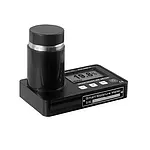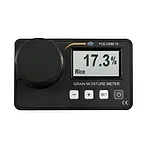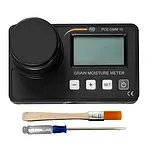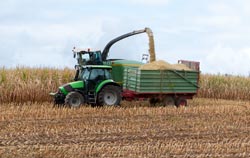







Bilingual Technical Support (EN / ES)
Public Service, Military and First Responder Discount
30 Day Return Policy
2 Year Warranty
Free Standard Shipping (US)
grain moisture meter for 18 different types of grain / small sample amount / LC display
automatic temperature compensation / manual measurement correction possible / whole grain measuring device
When it goes about the storage, shelf life and quality of the grain, the moisture of the grain plays a crucial role. Therefore, care and monitoring of the condition of the grain is essential before, during and after the storage. An ideal help here is the grain moisture meter from PCE Instruments. With the grain moisture meter, the moisture can be measured easily, conveniently and particularly accurately and thus the bulk material can be protected from spoilage. The grain moisture meter was specially developed to reliably determine the moisture content in 18 different types of grain (wheat, maize, japonica rice, Indian rice, soybeans, rice, sorghum, rapeseed, millet, peanuts, barley, sunflower seeds, coffee beans, cocoa beans, sesame, almond, linseed). Grain is a basic food for humans and animals and is e.g. also used as a raw material for the production of such products as spirits.

To measure the moisture content, the grain moisture meter only requires a very small sample volume of around 65 millilitres. For determination of the moisture content, the grain sample is filled into the small measuring container of the grain moisture meter, which can be cleaned quickly and easily after use. Grain crushing is not necessary to measure the moisture content. The grain moisture meter automatically performs temperature compensation during the measurement. The grain moisture meter shows the measurement results directly on the large LC display. The battery-powered grain moisture meter is extremely easy to operate with just four buttons. To protect the battery, the grain moisture meter automatically switches to sleep mode after three minutes of non-use. In addition, the grain moisture meter has a practical adjustment option in order to carry out the recalibration of the device.

Furthermore, the grain moisture meter is a helpful tool for carrying out regular quality controls in the field of grain cultivation. With this moisture meter, one can decide directly on the field whether the grain harvesting at an appropriate time already makes sense or not. Thus, the waiting times for the results of the external service providers can be reduced, which on the one hand saves the costs and on the other hand reduces the downtimes of the harvesting machines. The grain moisture meter can thus help to reduce the costs and increase the efficiency during the grain harvesting and processing.
| Cereal | Measuring range | Resolution | Accuracy |
| Wheat | 9 ... 38% | 0.1% | ± 0.5% |
| Japonica rice | 8.5 ... 40% | 0.1% | ± 0.5% |
| Indian rice | 8.9 ... 30.4% | 0.1% | ± 0.5% |
| Soybeans | 8.9 ... 33.4% | 0.1% | ± 0.5% |
| Rice | 10.4 ... 26.4% | 0.1% | ± 0.5% |
| Sorghum | 8 ... 35% | 0.1% | ± 0.5% |
| Rapeseed | 6.4 ... 25.4% | 0.1% | ± 0.5% |
| Millet | 9.4 ... 28.4% | 0.1% | ± 0.5% |
| Peanuts | 5.4 ... 18.9% | 0.1% | ± 0.5% |
| Barley | 9.4 ... 26.4% | 0.1% | ± 0.5% |
| Sunflower seeds | 7.9 ... 24.4% | 0.1% | ± 0.5% |
| Coffee beans | 10 ... 30% | 0.1% | ± 0.5% |
| Cocoa beans | 4.5 ... 17% | 0.1% | ± 0.5% |
| Sesame |
6 ... 18% | 0.1% | ± 0.5% |
| Linseed/flaxseed |
4.5 ... 18% | 0.1% | ± 0.5% |
| Almonds |
4.5 ... 21% | 0.1% | ± 0.5% |
| Cashew | 4.5 ... 15% | 0.1% | ± 0.5% |
| Repeatability | 0.2% | ||
| Adjustment range | ± 9.9% | ||
| Sample size | About 65 ml | ||
| Operating temperature range | 0 ... 40 °C / 32 ... 104 °F | ||
| Temperature compensation | Automatically | ||
| Power supply | 9V block battery | ||
| Automatic shutdown | After 3 minutes | ||